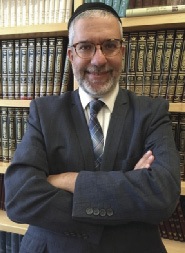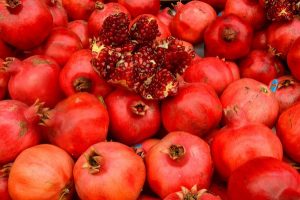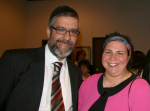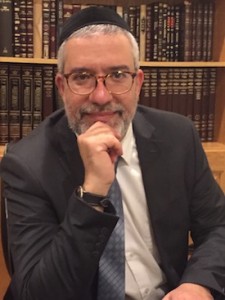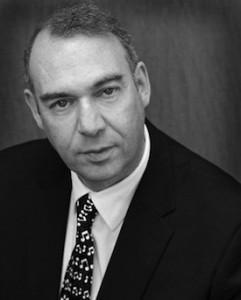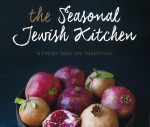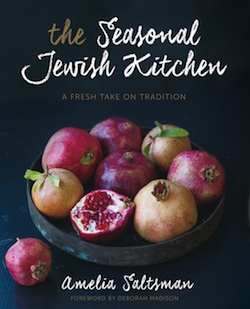Tamar Ilana leads a Sephardi singing workshop Feb. 20 and she and her ensemble, Ventanas, have five shows in British Columbia. (photo by Zahra Saleki)
Tamar Ilana and Ventanas wind up their Arrelumbre tour with six engagements in British Columbia, starting off Feb. 20 with Tamar leading a Sephardi singing workshop at Net Loft on Granville Island.
The group will perform at Russian Hall in Vancouver (Feb. 24), as well as in Duncan (Feb. 21), in Victoria (Feb. 22), on Quadra Island (Feb. 23) and on Bowen Island (Feb. 25). When they return to Toronto, they will record their third album.
Ventanas’ first album, which was self-titled, was released in 2013. Arrelumbre was recorded in November 2014 and released in June 2015 at the Aga Khan Museum in Toronto. Both recordings were nominated for two Canadian Folk Music Awards each: Ventanas for best traditional singer and best ensemble in 2014 and Arrelumbre for best traditional singer and best world group in 2015.
“On Arrelumbre, we recorded four original compositions – our first compositions!” Tamar told the Independent. “Up until then, we had focused on rearranging traditional works, but Arrelumbre launched us on the path of creativity. These four originals, each in a different rhythm, are ‘Elianto’ (slow 9/8), ‘Primavera’ (7/8 with a bulerías flamenco insert), ‘Libertad’ (6/8) and ‘Si Te Quiero’ (10/8). These pieces were composed by our oud player, Demetri Petsalakis, who is not joining us on this tour because he is touring with the New Canadian Global Music Orchestra. I then wrote lyrics in Spanish and we arranged them as a band.
“We also incorporated bass for the first time (on ‘Libertad’), invited guest Ukrainian folk singers Mark and Marichka Marczyk, and guest Iranian daf virtuoso Naghmeh Farahmand,” she added. “We loved having bass so much that we invited the guest bass player, Justin Gray, to become a member of the band. He has been with us ever since and he will be on tour with us this month. He is also the brother of our percussionist, Derek Gray, which makes them a great team for our rhythm section.”
When the Independent interviewed Tamar, she was in California – since the beginning of 2015, she has been touring with Lemon Bucket Orkestra’s Counting Sheep, a multimedia play inspired by the 2014 Maidan revolution in Ukraine. Tamar said the show has had three soldout runs in Toronto, won various awards at the Edinburgh Fringe Festival and has also traveled to Germany, Ireland, England and New York.
Since the Independent last interviewed Tamar four years ago – when she and Ventanas were in Vancouver for the folk festival – Tamar has also been doing other creative endeavours. In fall 2015, she performed in Yaël Farber’s Salomé at the Shakespeare Theatre Company in Washington, D.C., for three months. And, in 2016, with some funding from the Ontario Arts Council, she studied at Les Glotte-Trotters, a private vocal academy in Paris, France. Last year, she sang as an invited guest on various albums by other artists.
Among Ventanas’ highlights since the Vancouver folk fest, the group performed in 2016 at APAP|NYC (Association of Performing Arts Professionals | New York City), which, according to the organization’s website, is “the world’s leading gathering of performing arts professionals.” Ventanas also came out to Burnaby that year, to perform at Pacific Contact, B.C. Touring Council’s annual showcase. In 2017, they toured the United States for the first time, hitting New York City, Washington, D.C., Boston, Chicago and Minneapolis.
“We are absolutely thrilled to be returning to B.C., where we find the people to be warm and hospitable, and to greatly appreciate our art,” said Tamar.
Once they return home, however, Ventanas won’t be wasting any time – they are set to record their new album in March.
“This recording,” said Tamar, “will be at least 50% original material, this time from various members of the band, including Jessica Hana Deutsch, our violinist; Benjamin Barrile, our flamenco guitarist; Demetri Petsalakis. I have written some lyrics; however, I have also taken poetry in French by the poet Omar Khayyam for one piece, inspiration from Martin Luther King’s ‘I Have a Dream’ for another, and Hebrew teachings for another. This album brings us closer to our long-term goal of composing the majority of our music, based on the fusing of our cultures and traditions, resulting in our own sound and feel.”
The group that is in British Columbia this month is a little different than the one that came to Vancouver in 2014.
“Dennis Duffin, who was here with us in 2014, has since moved to Seville, Spain, to pursue his studies in flamenco guitar … and Alejandra Talbot, a flamenco dancer with us in 2014, has since moved to Mexico to delve into her roots,” said Tamar. “Benjamin Barrile, who I have collaborated with over the years … and who was a member with myself, Dennis and Lia [Grainger] in Flamenguitos del Norte, has been playing with Ventanas now since 2015, and we are excited to have him record with us on our upcoming album for the first time. Justin Gray, also with us since 2015, co-produces our albums, along with myself.”
Tamar said, while members have come and gone over the years – every musician bringing “their expertise and individual sound to the group” – “the core feeling of the band remains, and gets passed down through the generations, so to speak.”
“Overall,” she said, “the sound has matured, the sound grows richer and our musicianship increases, as we continue to become more and more ourselves. We are all working on various projects and what we learn, we pour into Ventanas, resulting in a depth and richness that we only hinted at in the beginning.”
For the full schedule and tickets to Ventanas’ B.C. performances, including Tamar’s singing workshop, visit ventanasmusic.com.





